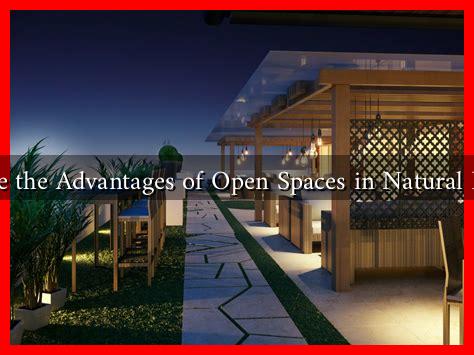-
Table of Contents
What are the Advantages of Open Spaces in Natural Designs?
Open spaces in natural designs refer to areas that are intentionally left free of buildings and structures, allowing for the integration of nature into urban and rural environments. These spaces can take many forms, including parks, gardens, green roofs, and natural reserves. The advantages of incorporating open spaces into design are numerous, impacting not only the environment but also the well-being of individuals and communities. This article explores the various benefits of open spaces in natural designs, supported by examples and research.
Enhancing Biodiversity
One of the most significant advantages of open spaces is their ability to enhance biodiversity. By providing habitats for various species, these areas contribute to the ecological balance of the environment. Open spaces can serve as crucial corridors for wildlife, allowing animals to migrate and thrive.
- Habitat Creation: Open spaces can support a variety of flora and fauna, from native plants to endangered species.
- Pollinator Support: Gardens and parks can attract pollinators like bees and butterflies, which are essential for food production.
- Ecological Resilience: Diverse ecosystems are more resilient to changes and disturbances, such as climate change.
For instance, the High Line in New York City transformed an abandoned railway into a thriving urban park, supporting numerous plant species and providing a habitat for various birds and insects. This project not only enhanced biodiversity but also revitalized the surrounding community.
Improving Mental and Physical Health
Access to open spaces has been linked to numerous health benefits. Studies show that spending time in nature can reduce stress, anxiety, and depression while promoting physical activity.
- Stress Reduction: Natural environments have a calming effect, helping to lower cortisol levels.
- Encouraging Physical Activity: Parks and open spaces provide opportunities for walking, jogging, and recreational activities.
- Social Interaction: Open spaces foster community engagement and social cohesion, which are vital for mental well-being.
A study published in the journal Environmental Health Perspectives found that individuals living near green spaces reported better mental health outcomes compared to those without such access. This highlights the importance of integrating open spaces into urban planning.
Promoting Sustainable Practices
Open spaces play a crucial role in promoting sustainability. They can help mitigate urban heat, improve air quality, and manage stormwater runoff.
- Urban Heat Island Effect: Green spaces can lower temperatures in urban areas, reducing the need for air conditioning.
- Air Quality Improvement: Plants absorb pollutants and produce oxygen, contributing to cleaner air.
- Stormwater Management: Open spaces can absorb rainwater, reducing flooding and improving water quality.
For example, the Millennium Park in Chicago incorporates green roofs and permeable pavements, which help manage stormwater and reduce the urban heat island effect. Such designs not only enhance the aesthetic appeal but also contribute to environmental sustainability.
Economic Benefits
Investing in open spaces can yield significant economic returns for communities. These areas can increase property values, attract tourism, and create job opportunities.
- Increased Property Values: Proximity to parks and green spaces often leads to higher real estate prices.
- Tourism Attraction: Well-designed open spaces can become tourist destinations, boosting local economies.
- Job Creation: Maintenance and development of parks create employment opportunities in landscaping, conservation, and recreation.
A report from the National Recreation and Park Association indicates that public parks contribute over $140 billion annually to the U.S. economy, showcasing the financial benefits of investing in open spaces.
Conclusion
Open spaces in natural designs offer a multitude of advantages that extend beyond mere aesthetics. They enhance biodiversity, improve mental and physical health, promote sustainable practices, and provide economic benefits. As urban areas continue to grow, the importance of integrating open spaces into design becomes increasingly clear. By prioritizing these areas, communities can create healthier, more sustainable, and economically vibrant environments for current and future generations. The evidence is compelling: open spaces are not just a luxury; they are a necessity for thriving communities.


